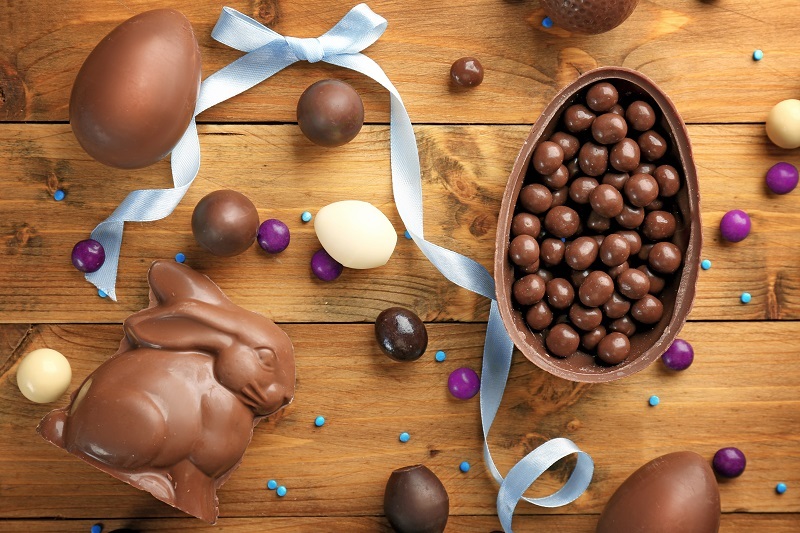Seven Intriguing Tulip Facts That Will Blow Your Mind
Posted on 22/08/2025
Seven Intriguing Tulip Facts That Will Blow Your Mind
Tulips--their vibrant colors and elegant blooms have enchanted garden lovers across the world for centuries. But behind the beauty of these iconic flowers lies a treasure trove of fascinating stories, unique evolution, and cultural significance. Whether you're a seasoned botanist or a casual gardener, you'll find these riveting tulip facts both entertaining and enlightening. Dive deeper to discover the extraordinary world of tulips and see why these flowers are much more than just pretty petals in the garden.
1. Tulips Weren't Always Dutch
When you think of tulips, the Netherlands--with its sprawling fields painted in dazzling bands of color--probably springs to mind. However, the origins of the tulip trace back to a completely different part of the world.
The True Birthplace of Tulips
- Originally, tulips grew wild in the mountainous regions of Central Asia, specifically in places like modern-day Kazakhstan, Uzbekistan, and Kyrgyzstan.
- These wild tulips were initially cultivated by the Ottomans in Turkey, where they became a symbol of paradise on earth due to their beauty and symmetry.
- The flower's name itself comes from the Persian word "delband", meaning turban, purportedly because the tulip's shape resembled the traditional headwear.
It wasn't until the 16th century that tulip bulbs made their way to Western Europe, thanks to the trading activities of the Ottoman Empire. From there, their popularity quickly blossomed, with Dutch horticulturists perfecting their cultivation and making tulips an international sensation.

2. The Madness of Tulip Mania
Tulips aren't just famous for their beauty--they're also infamous for being at the center of one of the world's first recorded economic bubbles. This phase of history is legendary among both economists and flower enthusiasts.
Tulip Mania: A Historical Phenomenon
- During the 1630s, tulip prices in the Netherlands surged to surreal levels, with rare bulbs being traded for the cost of houses or even entire estates.
- Speculators fuelled a buying frenzy, with people from all walks of life investing their fortunes in tulip bulbs, hoping to strike it rich.
- At its peak, some single tulip bulbs were valued at more than ten times the annual income of a skilled craftsman.
- The bubble famously burst in 1637, leaving scores of investors financially ruined.
This extraordinary event--known as Tulip Mania--remains a cautionary tale of market speculation. It's a testament to how tulip flowers were once seen as symbols of incredible wealth and status, far beyond mere garden decoration.
3. Tulips as Edible Delicacies
Most people admire tulips for their ornamental value, but did you know tulip petals and bulbs have been used as food?
An Unexpected Survival Food
- During periods of extreme famine, particularly in the Netherlands during World War II, people resorted to eating tulip bulbs and petals to survive.
- While not especially palatable, cooked tulip bulbs supplied essential nutrients when other food sources were unavailable.
- Today, tulip petals are sometimes used to decorate salads or desserts in fine dining, as they are non-toxic and can impart a mild, sweet flavor.
- Important note: Not all varieties are safe to eat. Parts of the plant, particularly the bulb, may cause stomach upset if not properly prepared or if consumed in large amounts.
If you're adventurous in the kitchen, always consult with a botanist or horticulturist before adding tulips to your recipes!
4. The Colorful Language of Tulips
Just as roses carry their own meanings, the color of tulip flowers can convey powerful messages. Understanding this floral symbolism adds a new layer of appreciation to any bouquet you give or receive.
Tulip Colors and Their Hidden Meanings
- Red Tulips: Symbolize passionate love, much like red roses.
- Yellow Tulips: Once believed to signify hopeless love, but now more commonly represent cheerfulness and sunshine.
- White Tulips: Represent forgiveness, purity, and new beginnings.
- Purple Tulips: Associated with royalty, luxury, and admiration.
- Pink Tulips: Stand for affection, happiness, and family warmth.
- Variegated Tulips: Due to their striking patterns, these are often seen as symbols of beautiful eyes or admiration.
The next time you buy or receive tulips, remember that their hues may carry a deeper significance than meets the eye!
5. Tulips Come in Almost Every Color--Except One
Tulip varieties span an incredible spectrum, making them a favorite among floral designers and garden enthusiasts. But there is an interesting exception to their colorful palette.
The Search for the True Blue Tulip
- Gardeners and breeders have developed tulip flowers in nearly every color--red, yellow, purple, pink, orange, white, green, and even near-black shades.
- One color remains elusive: blue. Despite centuries of effort and modern genetic engineering, no true blue tulip has ever been achieved.
- Any tulips marketed as "blue" are actually shades of violet or mauve, not a pure blue pigment.
- The lack of blue is due to the absence of specific pigments, called delphinidin, which give flowers like irises and hydrangeas their blue tones.
Blue tulips remain the holy grail for horticulturists--a challenge that continues to inspire research and hybridization efforts worldwide.
6. The Surprising Resilience of Tulip Bulbs
Tulip bulbs are masterpieces of natural engineering, able to survive a range of environmental stressors and reproduce with impressive reliability. Their life cycle is more fascinating than you might expect!
How Tulips Thrive Through the Seasons
- Cold-loving wonders: Tulips require a period of chilling dormancy. Their bulbs sprout best after experiencing cool, moist winters--why they thrive in temperate climates.
- Self-reliant storage: Each bulb stores enough energy and nutrients to support the emergence of its vibrant flower the following spring.
- Vegetative reproduction: Tulips propagate through offsets (small bulbs that grow beside the original), enabling the next generation to flourish year after year.
- Longevity: Some tulip bulbs can remain viable underground for a decade or longer, even if not flowering each year.
- Pest defense: While animals like squirrels and voles sometimes eat tulip bulbs, many varieties contain alkaloids that deter pests and rot.
Thanks to these adaptations, tulips are among the most resilient spring-blooming flowers--and a joy to plant for anyone looking to brighten their yard with minimal effort.
7. The Global Influence of Tulips
Few plants have had as wide-ranging a cultural, economic, and artistic influence as the humble tulip. Their journey through history has left a lasting mark on societies across continents.
The Enduring Impact of Tulips Worldwide
- Symbol of the Dutch: The Netherlands remains the world's largest producer and exporter of tulip bulbs and flowers, with millions of tourists flocking to see the annual tulip fields in bloom.
- National Pride: Tulips are national symbols in several countries, including Turkey and Iran, where they represent renewal, peace, and love.
- Artistic inspiration: Tulips feature in countless paintings, embroideries, and ceramics, from Ottoman miniatures to Dutch Golden Age still lifes and contemporary art.
- Festivals and celebrations: Cities from Istanbul to Ottawa to New York host annual tulip festivals, drawing global visitors to celebrate the tulip's beauty and symbolism.
- Scientific progress: Tulip breeding and hybridization have contributed to advancements in botany, genetics, and plant pathology.
The next time you stroll through a garden or admire a bouquet, remember that the tulip's influence spans centuries and continents, making it one of the world's most extraordinary flowers.

Frequently Asked Questions About Tulips
What is the best way to plant tulip bulbs?
Plant tulip bulbs in the fall, ideally 6-8 weeks before the first hard frost. Choose a sunny spot with well-drained soil, and bury bulbs about 6 inches deep with the pointy side up. Water generously after planting.
Can tulips grow indoors?
Yes! With proper "forcing," tulip bulbs can flower indoors. Chill your bulbs in the fridge for 12-16 weeks before planting them in containers. Provide plenty of indirect light and regular watering for gorgeous indoor blooms.
Do tulips come back every year?
Tulips are perennials by nature, but many modern hybrids are best treated as annuals since they may not return with the same vigor. Species tulips and older cultivars are more likely to come back year after year.
Conclusion: Unveiling the Timeless Allure of Tulips
From their wild origins and economic intrigue to culinary twists and cultural symbolism, tulips are endlessly captivating. Whether you adore them for their unparalleled beauty or admire their storied history, these seven fascinating tulip facts prove that these flowers are much more than garden staples--they're global icons that continue to inspire and amaze.
So, next time you gaze upon a tulip's vibrant bloom, remember that you are witnessing nature's artistry--and centuries of human fascination--in a single breathtaking flower.
Enjoy exploring, planting, and sharing the wonders of tulips!
Latest Posts
Why Red Roses Reign Supreme on Valentine's Day
8 astonishing facts about sunflowers that will broaden your perspective
Seven Intriguing Tulip Facts That Will Blow Your Mind





